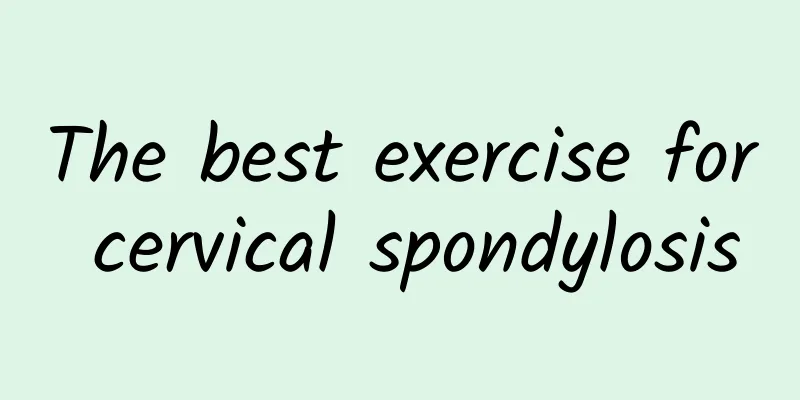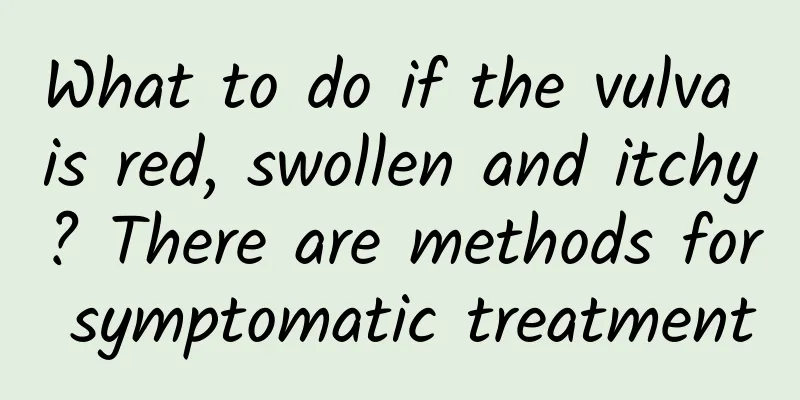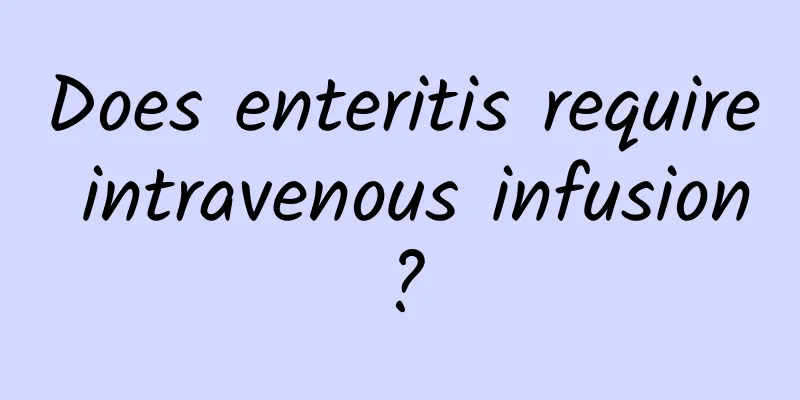What are the differences in symptoms between cerebral infarction and cerebral thrombosis?

|
Many people who suffer from cerebrovascular disease cannot tell which type they have and often call cerebral thrombosis cerebral infarction and cerebral hemorrhage cerebral thrombosis, etc. Although they are all cerebrovascular diseases, their symptoms and treatments are different. So what are the differences between them? Cerebral infarction 1. Cerebral infarction (cerebral infarction, cerebral infarction, ischemic stroke): Cerebral infarction is the destruction of brain tissue in the corresponding part after cerebral artery obstruction, which may be accompanied by bleeding. The pathogenesis is thrombosis or embolism, and the nature of the symptoms varies depending on the blood vessels affected by the lesions. Cerebral infarction accounts for 70% to 80% of all strokes. 2. Cause: Cerebral infarction is caused by a sudden decrease or cessation of blood flow in the local blood supply arteries of the brain tissue, resulting in ischemia and hypoxia of the brain tissue in the blood vessel supply area, leading to necrosis and softening of the brain tissue, accompanied by clinical symptoms and signs in the corresponding parts of the body, such as hemiplegia, aphasia and other symptoms of neurological dysfunction. 3. Main factors: hypertension, coronary heart disease, diabetes, overweight, hyperlipidemia, preference for fatty meat, many patients have a family history. It is more common in middle-aged and elderly people aged 45 to 70. 4. Clinical symptoms: The clinical symptoms of cerebral infarction are relatively complex. They are related to the site of brain damage, the size of ischemic blood vessels in the brain, the severity of ischemia, the presence or absence of other diseases before the onset of the disease, and the presence or absence of other important organ diseases. In mild cases, there may be no symptoms at all, that is, asymptomatic cerebral infarction; it may also manifest as recurrent limb paralysis or dizziness, that is, transient ischemic attack; in severe cases, there may not only be limb paralysis, but even acute coma and death. If the lesion affects the cerebral cortex, epileptic seizures may occur in the acute phase of cerebrovascular disease, with the highest incidence rate within 1 day after the onset of the disease. Cerebrovascular disease with epilepsy as the first onset is rare. 5. Treatment: Patients with this disease should pay attention to the treatment of hypertension, especially those with a history of lacunar infarction, who need to prevent recurrence. At the same time, care should be taken not to drop the blood pressure too quickly or too low. (1) Acute phase The principle is to improve blood circulation in the ischemic area of the brain as soon as possible and promote recovery of neurological function. 1) To relieve cerebral edema in patients with large and severe infarction areas, dehydrating agents or diuretics can be used. 2) Low molecular weight dextran can be used to improve microcirculation, which can reduce blood viscosity and improve microcirculation. 3) Blood dilution: ① Isovolumetric hemodilution therapy is performed by venous bleeding and simultaneous replacement of an equal amount of fluid. ② High-volume hemodilution therapy involves intravenous injection of fluid that does not contain blood to achieve volume expansion. 4) Thrombolysis: streptokinase, urokinase. 5) Anticoagulation: used to prevent thrombus extension and the occurrence of new thrombus (heparin, dicoumarol). 6) Vasodilation: It is generally believed that the effect of vasodilators is uncertain. For patients with severe increased intracranial pressure, it can sometimes aggravate the condition, so it is not recommended to use them in the early stages. (2) Recovery period Continue to strengthen the functional training of paralyzed limbs and speech functions. In addition to medication, physical therapy, body therapy and acupuncture can be used in combination. Cerebral thrombosis 1. Cerebral thrombosis (cerebral thrombosis): On the basis of cerebral arteriosclerosis and plaque formation, under the conditions of slow blood flow and low blood pressure, the formed elements of blood adhere to the intima of the artery to form a thrombus, which is called cerebral thrombosis. Clinically, hemiplegia is the main clinical manifestation. It usually occurs after the age of 50, and is slightly more common in men than in women. 2. Cause of disease: Cerebral thrombosis is a type of ischemic cerebrovascular disease, which is more common in middle-aged and elderly people, with no obvious gender difference. It is caused by lesions in the cerebral blood vessel wall itself. Cerebral thrombosis generally has a slow onset, and it takes dozens of hours to several days from onset to peak of the disease. This disease often occurs during sleep or quiet rest. Some patients often do not have any prodromal symptoms before going to bed, and find hemiplegia or aphasia when they wake up in the morning. This may be related to low blood pressure and slow blood flow at rest. However, some patients who develop the disease during the day often have prodromal symptoms such as dizziness, limb numbness and weakness, and transient ischemic attack. 3. Arteriosclerosis: Arteriosclerosis is the most common cause of cerebral thrombosis. Due to cerebral arteriosclerosis, the endothelium of the lumen becomes rough and the lumen becomes narrow. Under certain conditions, such as low blood pressure, slow blood flow or increased blood viscosity, enhanced platelet aggregation and other factors, coagulation factors aggregate into agglomerates in the lumen and form blood clots, which block blood vessels and interrupt blood flow, causing ischemia, hypoxia, softening, and necrosis of brain tissue in the blood vessel supply area, leading to the onset of the disease. 4. Clinical manifestations: Cerebral thrombosis can occur in any section of the cerebral blood vessels, but clinically, thrombosis formed in the branches of the internal carotid artery, anterior cerebral artery and middle cerebral artery is more common. The patient presented with central hemiplegia, facial paralysis and decreased sensation in the contralateral limbs. Most patients are conscious, and headache and vomiting are rare. However, if the anterior cerebral artery or the middle cerebral artery is blocked and a large area of cerebral infarction is formed, the condition is more serious and is often accompanied by symptoms of impaired consciousness and increased intracranial pressure. Thrombosis of the vertebral basilar artery system is often accompanied by symptoms such as dizziness, nausea, vomiting, diplopia, crossed movements and sensory disorders, dysarthria, dysphagia, and choking when drinking water. 5. Treatment: The treatment strategy and staged treatment of cerebral thrombosis should be determined according to the pathophysiological changes of ischemic stroke and different time stages. Overall treatment includes maintaining airway patency, controlling blood sugar at normal levels, etc. Thrombolytic therapy, anticoagulant therapy, fibrinolytic therapy, antiplatelet aggregation therapy, vasodilation therapy and other treatments. Carry out early rehabilitation functional exercises. |
<<: Whitening and exfoliating, it has 7 major skin care benefits, don’t throw it away!
>>: What are the whitening fruits? Which fruits can whiten your skin?
Recommend
What are the medicinal effects of the traditional Chinese medicine Astragalus?
Anyone who has been to a traditional Chinese medi...
What causes burning pain in the calf?
If you feel burning pain in your calves, it may b...
What causes swelling and pain in the ear?
From the clinical point of view, ear pain is larg...
What are the effects of nano sweat steam room
For friends who want to do nano sweat steaming, i...
Can I use a fan on the wound?
You can use a fan when there is a wound, especial...
What are capillary hemangiomas on the fingers?
Capillaries are an indispensable part of our huma...
Women should eat like this to lose weight, cleanse the intestines, detoxify, lose weight and remove stool, and lose 6 pounds in 5 days!
Many office workers today are troubled by obesity...
Can Huoxiang Zhengqi Water reduce fever?
Huoxiang Zhengqi Water contains a certain amount ...
Inflammation of the nose and ulceration of the lining
Because there is no inflammation, the nose will b...
What are the effects of sea cucumber essence tablets
The weather in spring will gradually warm up, and...
What to do if your calf muscle is sprained? There are ways to relieve calf muscle sprain
If we do not do the warm-up exercises properly wh...
What to do if the vulva itches after medical abortion
If vulva itching occurs after medical abortion, i...
Early symptoms of hyperthyroidism in women
Hyperthyroidism is an overactive thyroid gland, w...
What are the dangers of an enlarged uterus?
For a woman, the uterus is the basic place for nu...
What is the disease if the baby's urine is tea-colored?
The color of the baby's urine is relatively d...









